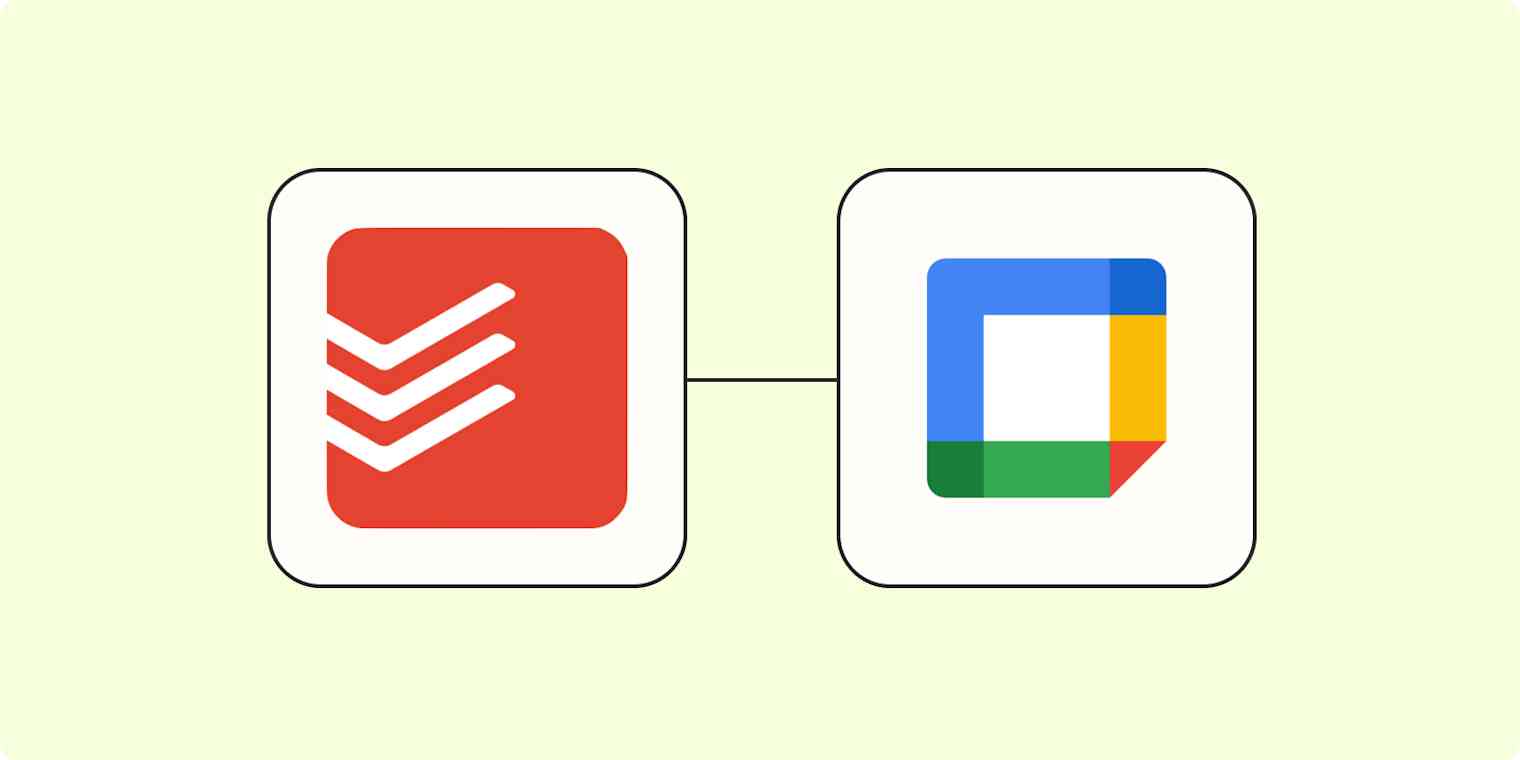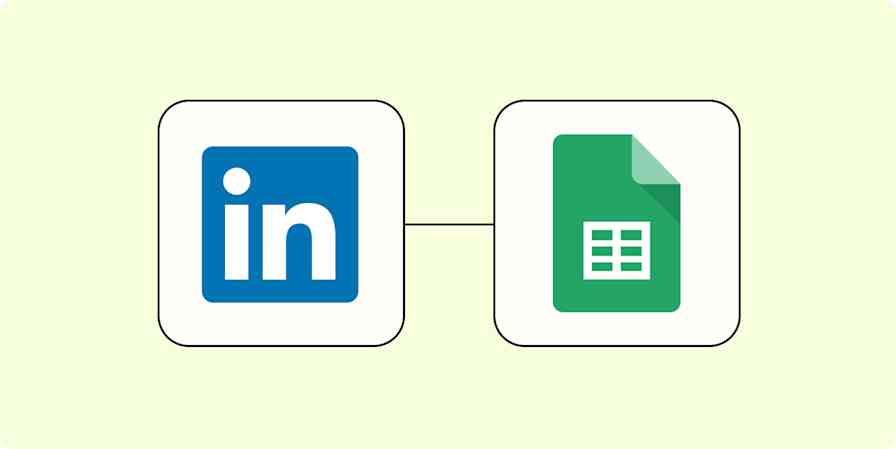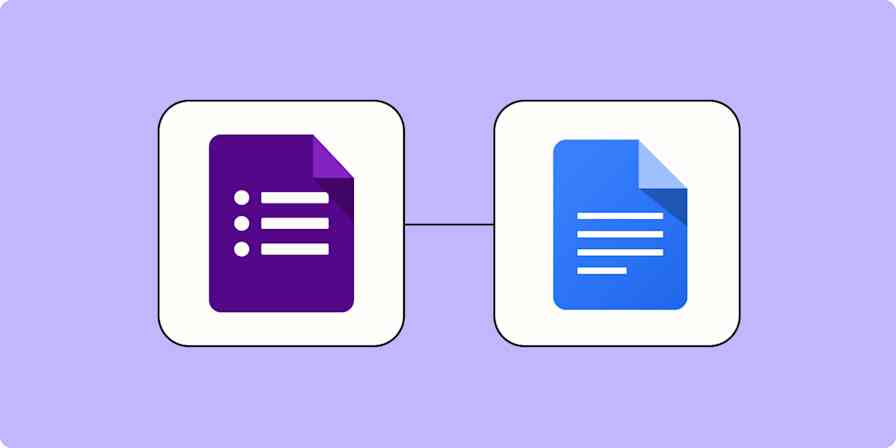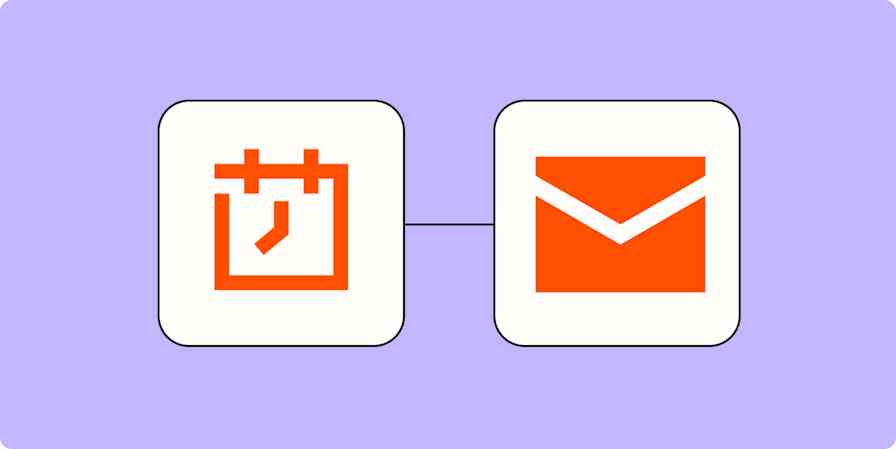Do you ever feel like you use a million different apps to track your life? From your calendar app to schedule meetings to your personal to-do list to track your daily work and home to-dos to your team task app to manage shared responsibilities, it's a lot to juggle.
And if you're not careful, you could lose track of it all and fall behind. Fortunately, it's easy to connect your task and calendar apps so you never miss a meeting or deadline again.
Here's how you can use a Zap—Zapier's automated workflows—to automatically add every new Google Calendar event to your Todoist tasks. Together, Google Calendar and Todoist will keep all of your scheduling information in sync so you only have to open one app to know what's on the docket for the day.
New to Zapier? It's workflow automation software that lets you focus on what matters. Combine user interfaces, data tables, and logic with 6,000+ apps to build and automate anything you can imagine. Sign up for free.
Add Todoist tasks for new Google Calendar events
Zapier lets you create automated workflows called Zaps, which send your information from one app to another. You can create your own Zap from scratch without any coding knowledge, but we also offer quick templates to get you started.
If you'd like to start with a template, click on it below, and you'll be taken to the Zap editor. You'll need to create a Zapier account if you don't already have one. Then, follow the directions below to set up your Zap.
Add new Google Calendar events to Todoist as tasks
Set up your Google Calendar trigger
Let's start with the trigger—the event that starts your Zap. If you're using the Zap template, this will be selected for you. Otherwise, search for and select Google Calendar for the trigger app and New Event for the trigger event, then click Continue.
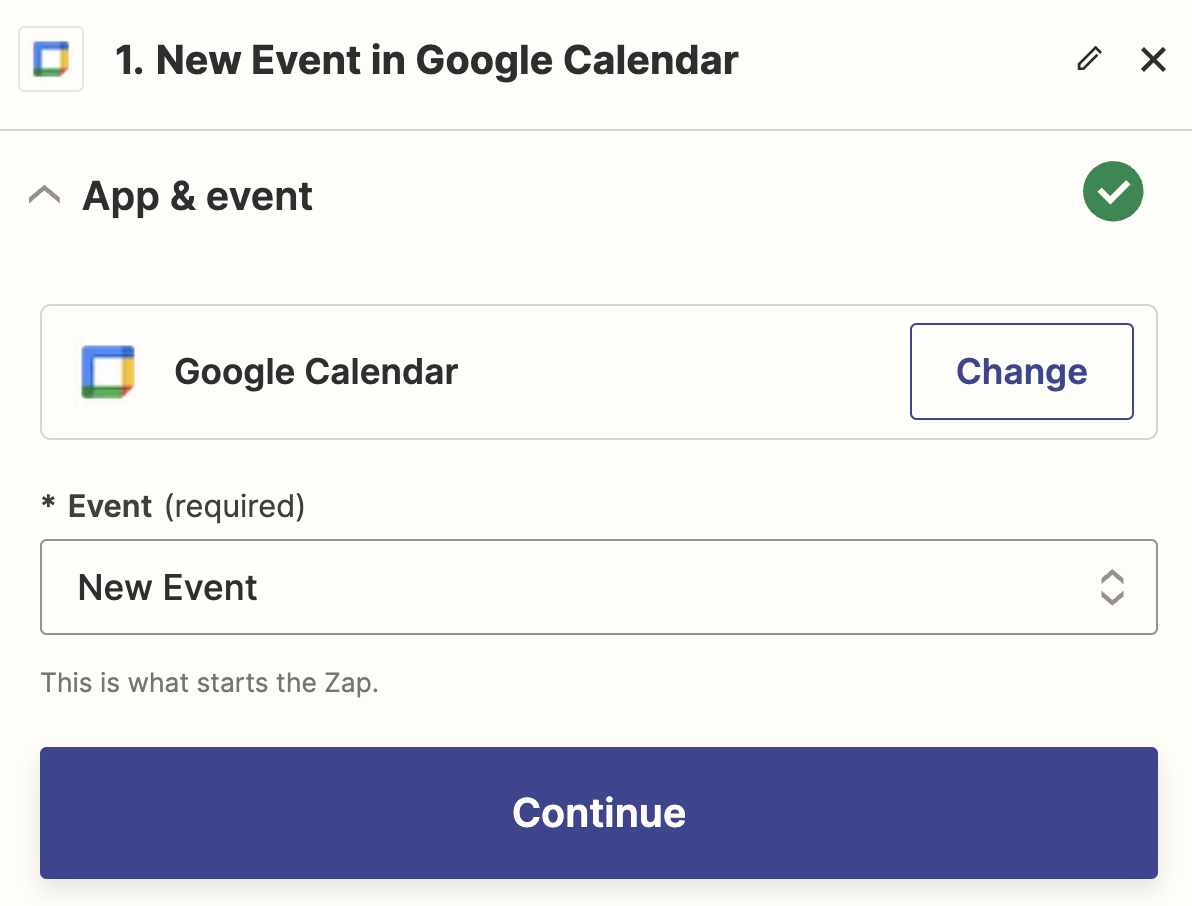
Connect your Google account, if you haven't already, and click Continue.
Next, select the specific calendar you want to use in this Zap, then click Continue.
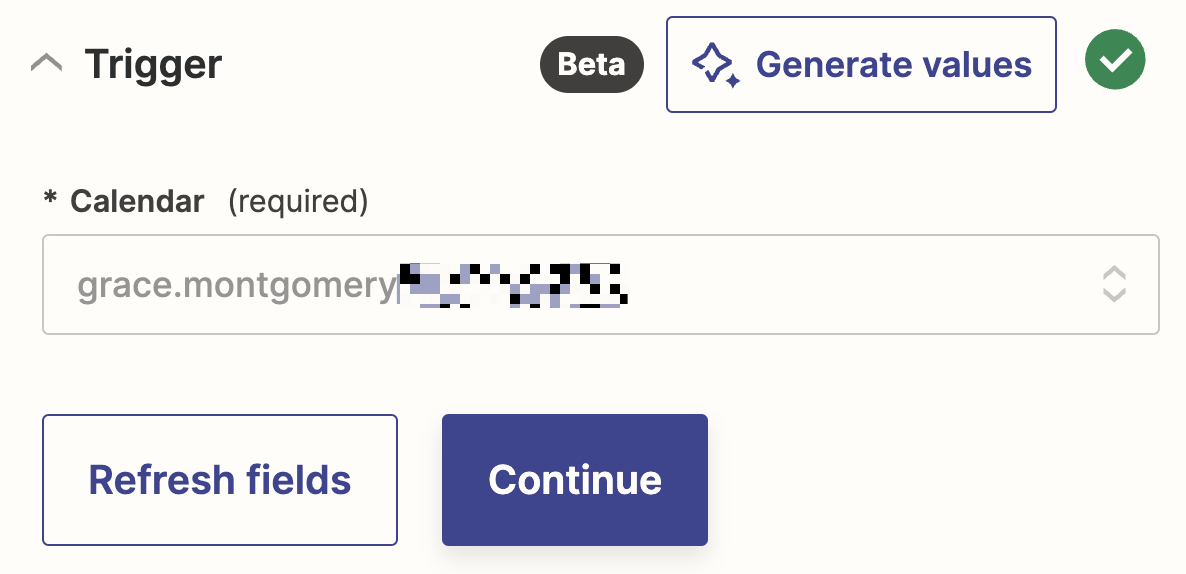
Next, it's time to test your trigger step. The information collected in this step will be used to set up the rest of your Zap. If you don't have any events on the Google Calendar you selected, add one now before you test this step.
Click Test trigger and Zapier will find recent events in your calendar. Select one and click Continue with selected record.

Once the test is done, you're ready to set up your action step.
Set up your Todoist action
Now it's time to set up the action—the event your Zap will perform once it's triggered. If you're using the Zap template, these will already be selected for you. Otherwise, search for and select Todoist as your action app and Create Task as your action event. Click Continue.
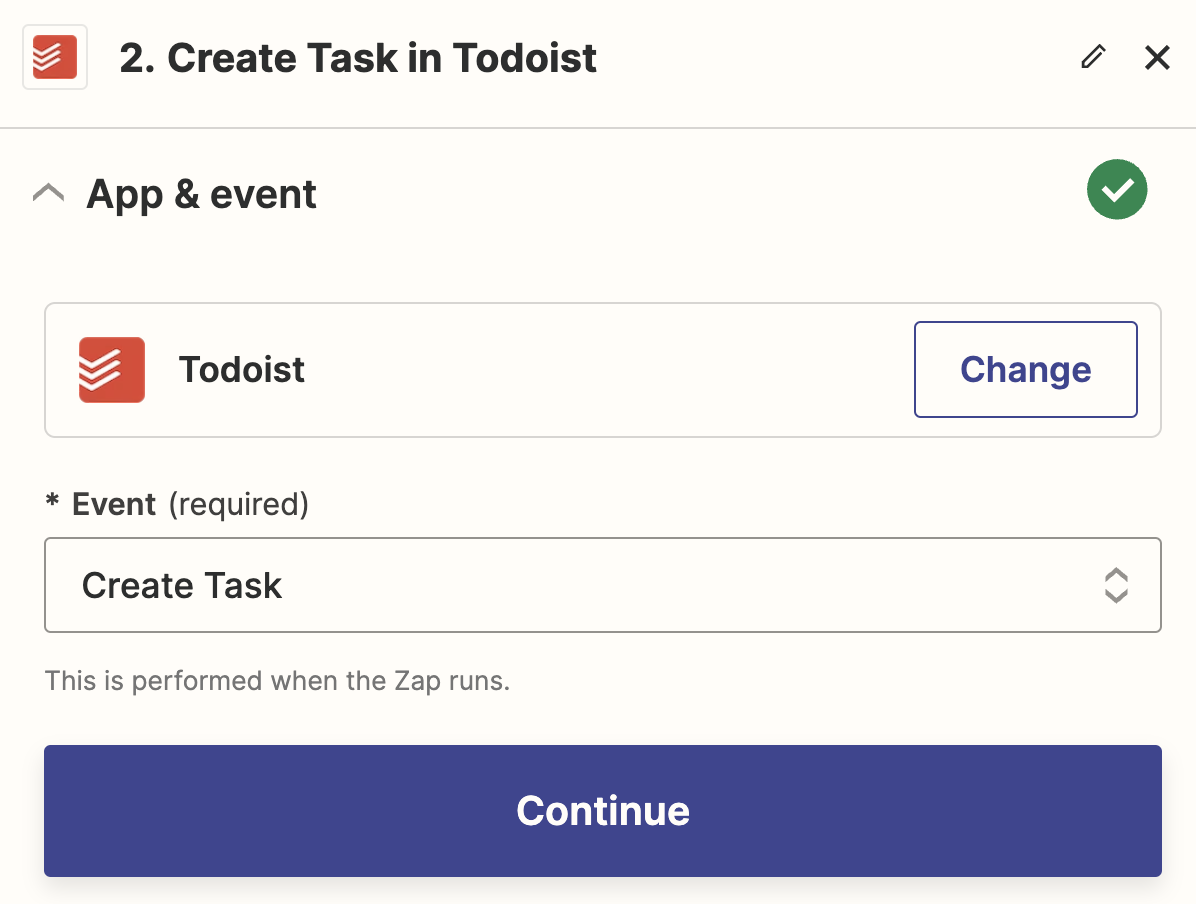
Connect your Todoist account, if you haven't already, then click Continue.
Now you can customize your Todoist task by choosing a project, adding a title, and so on. The default project goes to your inbox in Todoist, but you can select whichever you want. In our example, we added this task to a daily to-do list project.
The title is the only required field. To get the correct event title from Google Calendar, click in the Title field and select Summary from the Insert Data dropdown. If you're using the Zap template, this will already be selected for you.
In the Note field, we've added the Description from the Google Calendar event, but you can add whatever details are most helpful to you here.
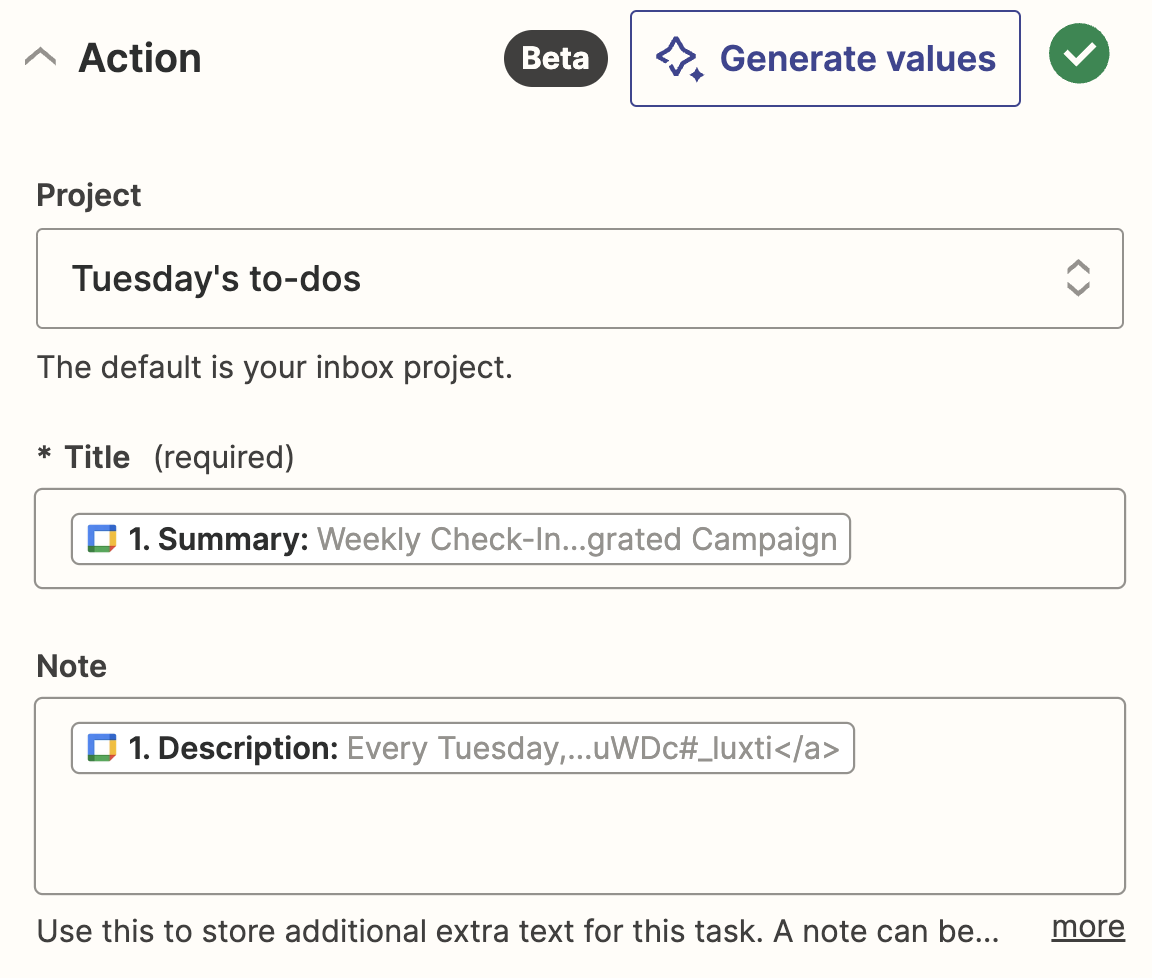
If you'd like to have a specific due date for your event, which is probably helpful, add a date to one of the two Due Date fields. Todoist supports human readable dates like "today" or "tomorrow at noon" in the Due Date (Human Formatted) field, but since the due date is coming from our Google Calendar event, we'll add Event Begins (Pretty) to the Due Date (Raw Formatted) field, which is recommended when using a date/time value from another calendar or to-do system.
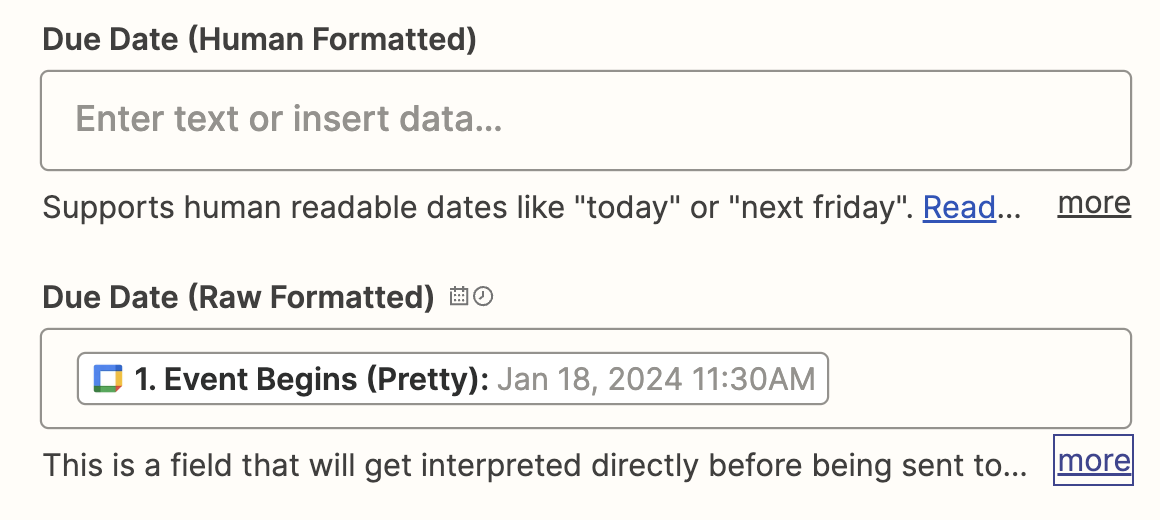
You can also assign the task to a specific person, add a priority, or labels to your task. Once you're done customize your action, click Continue.
Click Test action, and Zapier will send the test data to Todoist. Pop over to Todoist and you should see your calendar event added as a to-do in the list you selected:

If everything looks right, you're ready to use your Zap. Now every time you add a new event to Google Calendar, you'll have a new task on your Todoist task list.
More ways to track your events
Todoist works great as a catch-all for everything—from work meetings to dinner dates with friends. If you enjoy sharing data between your Google Calendar and Todoist apps, check out these other workflows:
Create new Todoist tasks when your Google Calendar event starts
Add new Todoist tasks to Google Calendar as detailed events
This article was originally published in December 2020, written by Kaylee Moser. It was most recently updated in December 2023 by Grace Montgomery.
Related reading:
